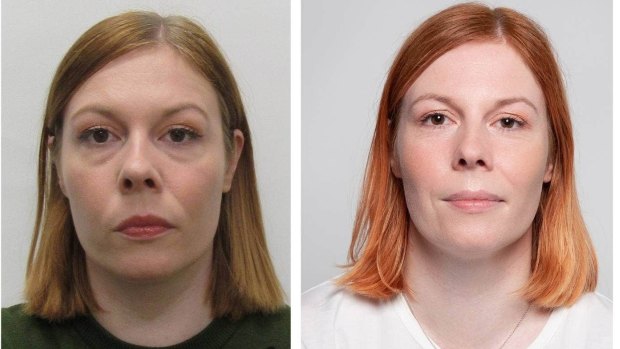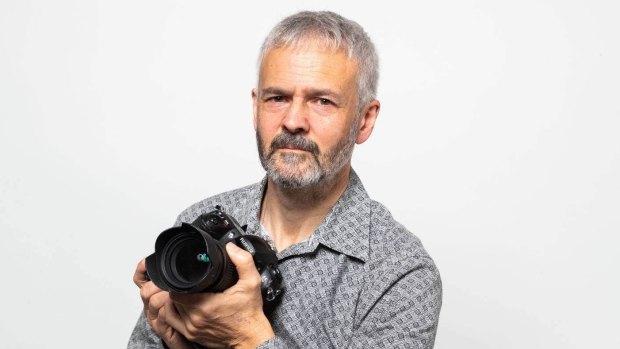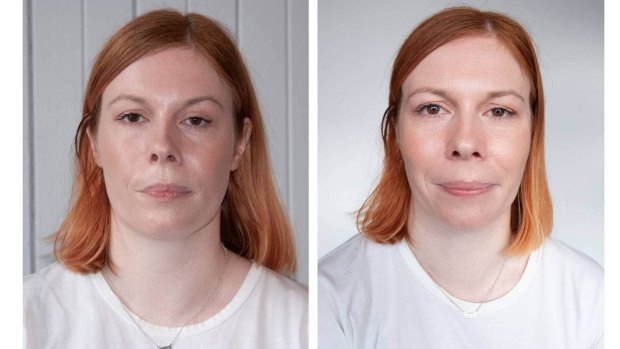This was published 1 year ago
Tips on renewing your passport: How to take a photo you won't hate for 10 years
By Siobhan Downes

My current, serial killer-ish passport photo versus one taken by a professional photographer.
You know the serial killer Charlize Theron played in the 2003 movie Monster? The role for which the actress underwent such a dramatic physical transformation she won an Oscar for it?
Well, that's exactly who I look like in my current passport photo.
Needing to renew my passport last year, I went to the nearest pharmacy to get my photo done, paying $20 for the convenience of having someone take a shot that was guaranteed to meet the requirements.
And yes, it ticked all the technical boxes – but it was also quite possibly the most unflattering photo ever taken of me. And I was stuck with it for the next 10 years.
For the camera shy, having your passport photo taken is a special type of torture. There's nothing more confronting than being presented with a full-frontal view of your fizzog, discovering one of your nostrils is undeniably larger than the other.
"It's a bit scary for a lot of people because you really see yourself," says professional photographer James Gilberd, owner of the Photospace studio and gallery in Wellington.
"What you have to remember is the idea of a [biometric] passport photo is that a computer can recognise your face. That means picking up your facial features and measuring them.
"And yes, it does bring out those slight differences between the left and right side of your face – which everybody has."
Gilberd has been offering passport photos as a specialist service for more than 20 years, charging the same as what you'd pay at a pharmacy – $20. The difference is he uses his expertise and professional gear to take a photo that won't make you cringe at the check-in counter.

Credit: Jericho Rock-Archer/Stuff
Intrigued by the promise of a "good" passport photo – or at least one where my murderous tendencies aren't quite so apparent – I was eager to visit Gilberd to find out the tricks of the trade.
It turns out lighting is key, and the main reason why you might consider going to a professional. For his passport photos, Gilberd uses a studio flash unit with an umbrella reflector.
But even if you're getting someone to take your photo at home (and no, you can't just take a selfie), there are some things you can do to improve it.
Avoid relying on room lighting, or the built-in flash on your camera, Gilberd says. "They're brutal."
Instead, find a window that's not getting direct sunlight – ideally on a cloudy day. You need to face the window so the light is hitting you front on.
As for the camera, ideally you'll have one with a decent zoom, not just a little point and shoot. Most smartphone cameras these days will do the job, but the photographer will need to zoom in from about 1.5m away – if they're too close, your features will be distorted. From this angle you will resemble a blobfish; a gelatinous mass with a bulbous nose.
It's a pore-expandingly humid day when I meet Gilberd, and within minutes he's handing me tissues to blot my face. He also encourages me to smooth my hair, and adjust my clothing and necklace to make sure everything is sitting nicely. These little details can make a big difference.

Credit: James Gilberd/Stuff
When posing for the photo, Gilberd recommends letting out a few deep breaths to relax. Avoid wringing your hands or balling them into fists, like a rugby team photo – the tension will shoot up into your shoulders and jaw. Give them a little shake before placing them loosely on your lap.
If you're aware you're a blinker, you might end up overcompensating by forcing your eyes open and staring at the camera too hard. Blink a few times to relax your eyes.
The aim is a "neutral" expression, with your mouth closed. You're not supposed to smile, but that doesn't mean you have to look actively unpleasant. The more relaxed you are, the less severe you will appear.
It might take a few shots to settle into the process – Gilberd says he routinely takes half a dozen, and photos four, five and six are usually the winners.
Ultimately, getting a decent photo has "nothing to do with what you look like," he says.
"It's how you feel and how you hold yourself for the camera."
As someone who has always considered myself chronically unphotogenic, I'm pleasantly surprised by the "good" option Gilberd sends me.
The gloomy expression and prominent eye bags that haunt my current passport photo have all but disappeared, with the help of some quality lighting and Gilberd's expert directions. I would even go so far as to describe it as a passport photo glow-up.
It's just too bad I've got nine years to go until I can officially change it.
See also: Wait times for passports doubled as Australians rush to renew
Sign up for the Traveller newsletter
The latest travel news, tips and inspiration delivered to your inbox. Sign up now.